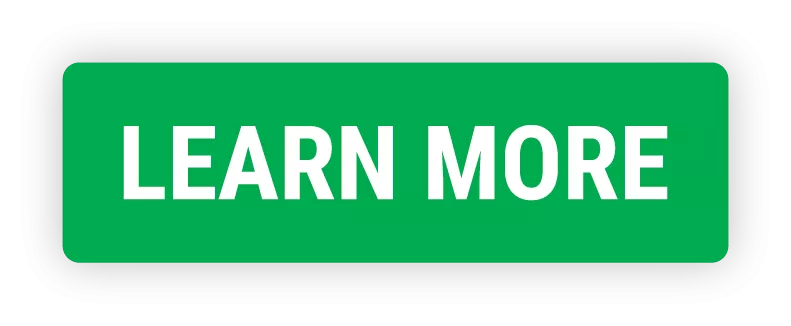Navigating the dynamic and complex terrain of today’s workforce, the spotlight has increasingly indicated that soft skills are in-demand. Often regarded as the holy grail of recruiting, soft skills encompass emotional intelligence and interpersonal skills such as communication, empathy, and adaptability. These skills have emerged as some of the most sought-after qualifications that team members can bring to the table.
A LinkedIn survey revealed that more than half of nearly 300 hiring managers identified a deficit in soft skills among job candidates, acknowledging that this gap is potentially hindering their company’s productivity. Consequently, recruiters are thinking outside the box, seeking innovative ways to identify new hires proficient in communication, time management, negotiation, writing, listening, problem-solving, and decision-making. These soft skills, rooted in intuitive emotional intelligence (EQ), are increasingly being recognized as a more reliable predictor of success compared to hard skills, which can be learned and developed through training.
But what makes these skills such a powerful predictor of success? And how can organizations ensure these invaluable skills are considered? In this article, we will delve into the nuances of hard skills and soft skills, exploring their meanings, differences, examples, and their critical impact in the workplace.

Decoding The Difference Between Hard and Soft Skills
In the world of work, skills are the building blocks that construct a successful organization. To lay a strong foundation and build upward, it’s crucial to grasp the nuances of both hard and soft skills.
So, what sets hard skills apart from soft skills? It’s the way we acquire and apply them. Hard skills are often learned through formal education and training, verifiable and straightforward. On the other hand, soft skills are subtler often honed through experience and interpersonal interactions.
What are hard skills and soft skills?
Hard skills are the technical expertise required to perform specific tasks efficiently, while soft skills enable you to navigate emotional and social interactions at work. Hard skills, such as computer programming or data analysis, are quantifiable and essential for particular roles. In contrast, soft skills, such as communication and teamwork, are interpersonal traits that influence how we engage with others and are universally applicable across professions.
Meaning of Hard Skills:
Have you ever marveled at a meticulously crafted spreadsheet or admired the precision of well-coded software? That’s the work of hard skills in action. Hard skills are those tangible, teachable abilities or knowledge sets that are quantifiable. These are skills you can usually learn in a classroom, online course, or through books and manuals.
Consider a surgeon’s dexterity with the scalpel, a coder’s mastery of programming languages like Python, or an accountant’s proficiency with Excel. These are all hard skills – measurable, teachable, and crucial in their respective fields.
Meaning of Soft Skills:
But what about those moments when a calming voice diffuses a heated meeting or when a team rallies together to meet a tight deadline? That’s the realm of soft skills. Soft skills, often intertwined with personal characteristics, are those intangible qualities that influence how we interact with others.
Think of empathy in a nurse, effective communication by a manager, or the creative problem-solving prowess of a team leader. These skills may not be listed on a certificate but are equally vital in navigating the workplace successfully.
The Case for Soft Skills In The Workplace:
In an era where collaboration and adaptability are paramount, soft skills are the linchpin that holds together the complexity of a successful organization. They foster a harmonious environment conducive to teamwork, boosting both efficiency and innovation.
Imagine a product team scrambling to meet a tight deadline. It’s the project manager’s adaptability and the team’s collective collaboration that ensures a smooth workflow amidst chaos. Picture a customer service representative transforming a potential conflict into an opportunity through empathy and effective communication. These scenarios underline the critical role of soft skills in navigating the complexities of the workplace.
Soft Skills Are Indispensable:
Soft skills are not just preferred; they’re indispensable across companies and industries. A survey by the Wall Street Journal of 900 executives revealed a staggering 92% believed soft skills were either equally important or more crucial than technical skills. However, a significant 89% faced challenges in finding individuals embodying these skills.
LinkedIn’s 2018 Workforce Report echoes similar sentiments, spotlighting leadership, communication, collaboration, and time management as the most sought-after soft skills.
Daniel Goleman, author of Emotional Intelligence at Work, would agree. His research spanning 500 executives concluded that emotional intelligence, a conglomerate of soft skills, outweighed experience or IQ in predicting top-notch performance. CEOs at leading companies like Amazon and Xerox, known for championing emotional intelligence in the workplace, have meticulously woven soft skills into their corporate fabric.
Yet, the benefits of soft skills training extend beyond creating a fulfilling work culture. There’s a tangible link between profitability and leaders with elevated emotional intelligence. A study showcased that CEOs, high on character ratings by employees, yielded an impressive average return of 9.35% over two years. This is nearly quintuple compared to companies led by CEOs with lower character ratings.
While the case for developing soft skills is compelling, striking the right balance is crucial. Good leadership skills must harmonize with meticulously honed talents and hard skills.
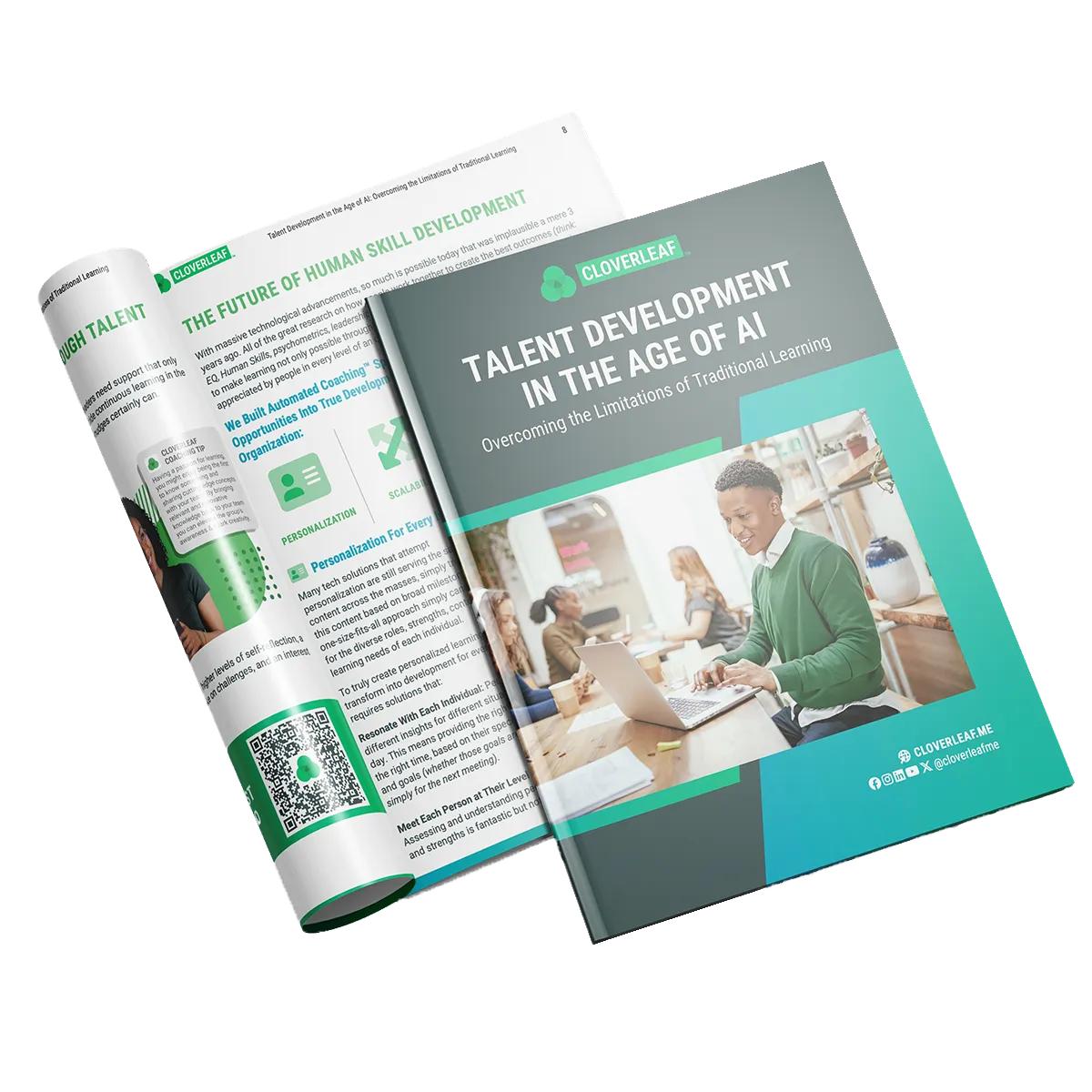
HUMAN SKILL PROGRAMS ARE HITTING LIMITATIONS...
5 THINGS THIS FREE RESOURCE WILL TEACH YOU
- Close the widening gap between learning and on-the-job application
- Overcome the tension of pausing productivity for development opportunities
- Integrate learning so it is actually in the flow of work
- The evolution of human skill development
- What Automated Coaching™ is and how it works.

The Significance of Hard Skills In The Workplace
In a rapidly evolving technological landscape, hard skills can anchor an organization in competence and expertise. While soft skills are undeniably invaluable, the precision, specialization, and quantifiable knowledge that hard skills bring are irreplaceable.
Consider a cybersecurity analyst meticulously thwarting a network breach or an architect skillfully utilizing software to design an intricate structure. In these scenarios, the prowess of hard skills is undeniable and indispensable.
In pursuing emotional intelligence, it’s essential to pause and ponder: Have some thought leaders leaned too far into the realm of EQ at the expense of technical expertise? Cal Newport, author of So Good They Can’t Ignore You, suggests that perhaps there’s an overcorrection unfolding.
Newport advocates for the indispensable nature of hard skills, underscoring that a flourishing career is often rooted in becoming an authority in a specific domain. Fields, especially those entrenched in technology and specialized knowledge, seek individuals with a niche set of skills and technical acumen. Newport contends that mastery in a particular field not only secures your market position but also paves the way for greater control and satisfaction in one’s career.
Icons like Steve Jobs and Bill Gates embody the trajectory where technical mastery eventually evolved into influential leadership. However, it’s noteworthy that while many may possess the foundational hard skills to steer a company, they may initially lack soft skills, such as active listening. Exceptional leaders often begin their journey with expertise and progressively cultivate their emotional intelligence and soft skills.
Personal and Professional Development Is A Blend Of Both Skills
In essence, the journey from expertise to leadership isn’t linear but rather a merging of hard and soft skills. While mastery in a field lays the groundwork, the continuous development of soft skills can elevate an expert to a leader.
The Synergistic Blend Of Hard Skills Meet Soft Skills
While hard and soft skills may seem worlds apart, they often converge seamlessly in a professional setting, creating a dependability upon each other that drives success. By understanding the juxtaposition and complementary nature of these skills, one can appreciate how they collectively contribute to an individual’s and an organization’s growth.
For example, consider a software engineer (hard skill) who can articulate complex technical issues to a non-technical audience (soft skill), or a financial analyst who can crunch numbers (hard skill) and then strategically communicate insights for decision-making (soft skill) to their co-workers. In these scenarios, integrating both skill sets is evident and vital.
Navigating professional environments requires a careful balance between technical know-how and interpersonal dexterity. By appreciating the distinct contributions of hard and soft skills, professionals can cultivate a well-rounded approach to their career growth and organizational impact.
7 Soft Skills vs. Hard Skill Examples
1. Graphic Designer (Hard Skill: Graphic Design) & Team Collaboration (Soft Skill: Collaboration)
- A graphic designer crafts visually stunning designs using tools like Adobe Illustrator (hard skill). Simultaneously, they effectively collaborate and iterate based on team feedback (soft skill).
2. Data Scientist (Hard Skill: Data Analysis) & Effective Communication (Soft Skill: Communication)
- A data scientist excels in interpreting data using Python(hard skill) and succinctly presents data-driven insights to stakeholders (soft skill).
3. Project Manager (Hard Skill: Project Management) & Emotional Intelligence (Soft Skill: Emotional Intelligence)
- A project manager adeptly uses project management software to keep tasks on track (hard skill) while empathetically addressing team concerns and fostering a positive work environment (soft skill).
4. Marketing Specialist (Hard Skill: SEO Optimization) & Creativity (Soft Skill: Creativity)
- A marketing specialist ensures content is SEO-optimized using tools and analytics (hard skill) while also practicing critical thinking to creatively capture audience interest (soft skill).
5. Customer Service Representative (Hard Skill: Customer Relationship Management Software) & Active Listening (Soft Skill: Listening)
- A customer service representative efficiently navigates CRM software to manage customer interactions (hard skill) while actively listening and empathizing with customer concerns (soft skill).
6. Surgeon (Hard Skill: Surgical Procedures) & Patient Care (Soft Skill: Empathy)
- A surgeon performs intricate surgical procedures precisely (hard skill) and demonstrates care and communication skills while interacting with patients and their families (soft skill).
7. Salesperson (Hard Skill: Sales Techniques) & Relationship Building (Soft Skill: Relationship Building)
- A salesperson applies strategic sales techniques to meet quotas (hard skill) while building lasting relationships with clients through trust and rapport (soft skill).
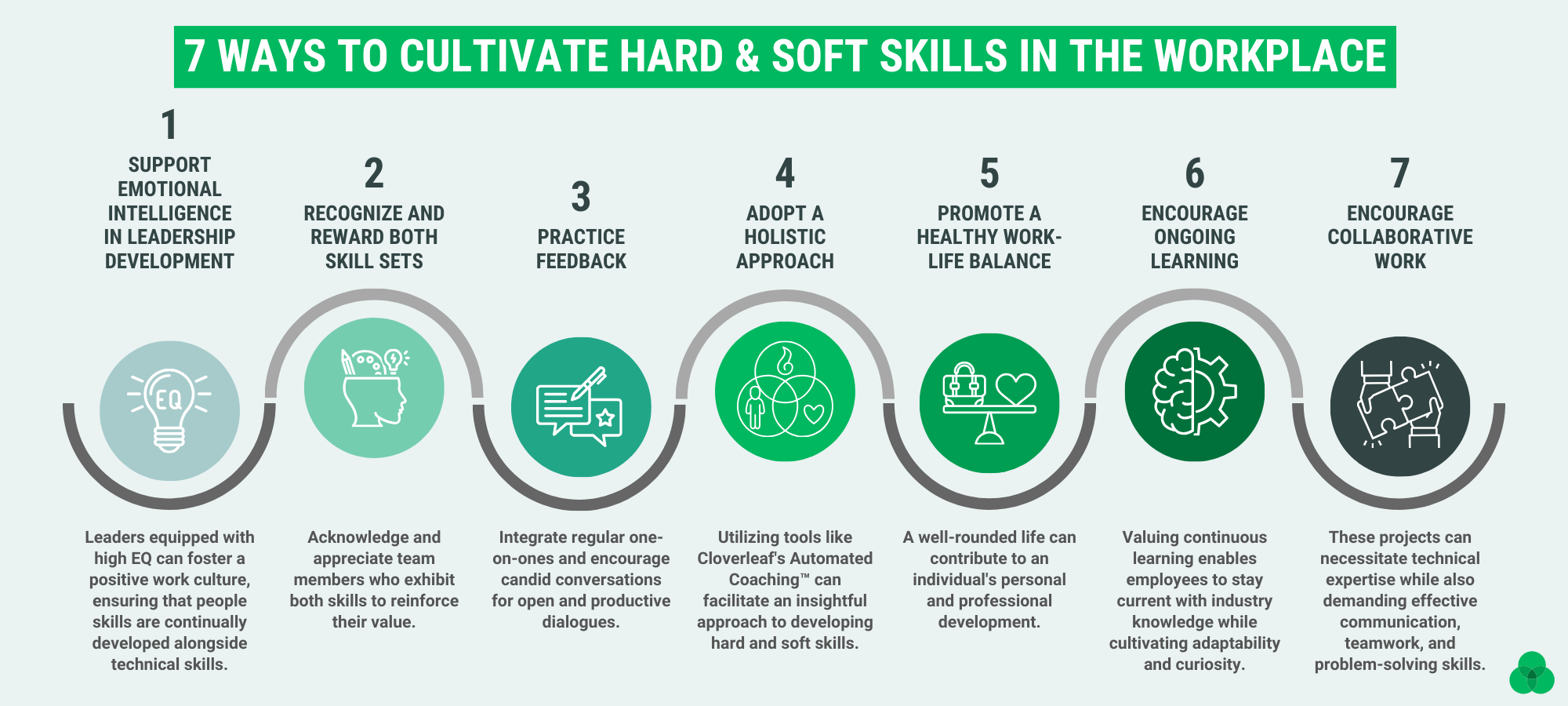

Cultivating The Whole Person: Merging Technical Prowess with Emotional Acumen
In the realm of professional development, striking a harmonious balance between hard skills and emotional intelligence is pivotal. However, as soft skills can be elusive on a resume and complex to delineate in a job description, leaders often find it challenging to identify and nurture these attributes effectively.
Companies with low turnover rates have cracked the code in developing both skill sets within their employees, creating a thriving and productive work environment. Below are three vital practices to strengthening these skills within your culture:
1. Support Emotional Intelligence in Leadership Development:
Leadership training should underscore the importance of emotional intelligence. Leaders equipped with high EQ can foster a positive work culture, ensuring that the people skills of their team members are continually developed alongside technical skills.
2. Recognize and Reward Both Skill Sets:
Acknowledging and appreciating employees who exhibit a fine balance of hard skills and emotional intelligence can set a benchmark for others, promoting a culture of balanced professional development.
3. Practice Feedback:
Regular assessments can provide valuable insights into an employee’s progress in both hard and soft skills. By integrating regular one-on-one sessions and encouraging candid conversations, employees and leaders can engage in open and productive dialogues.
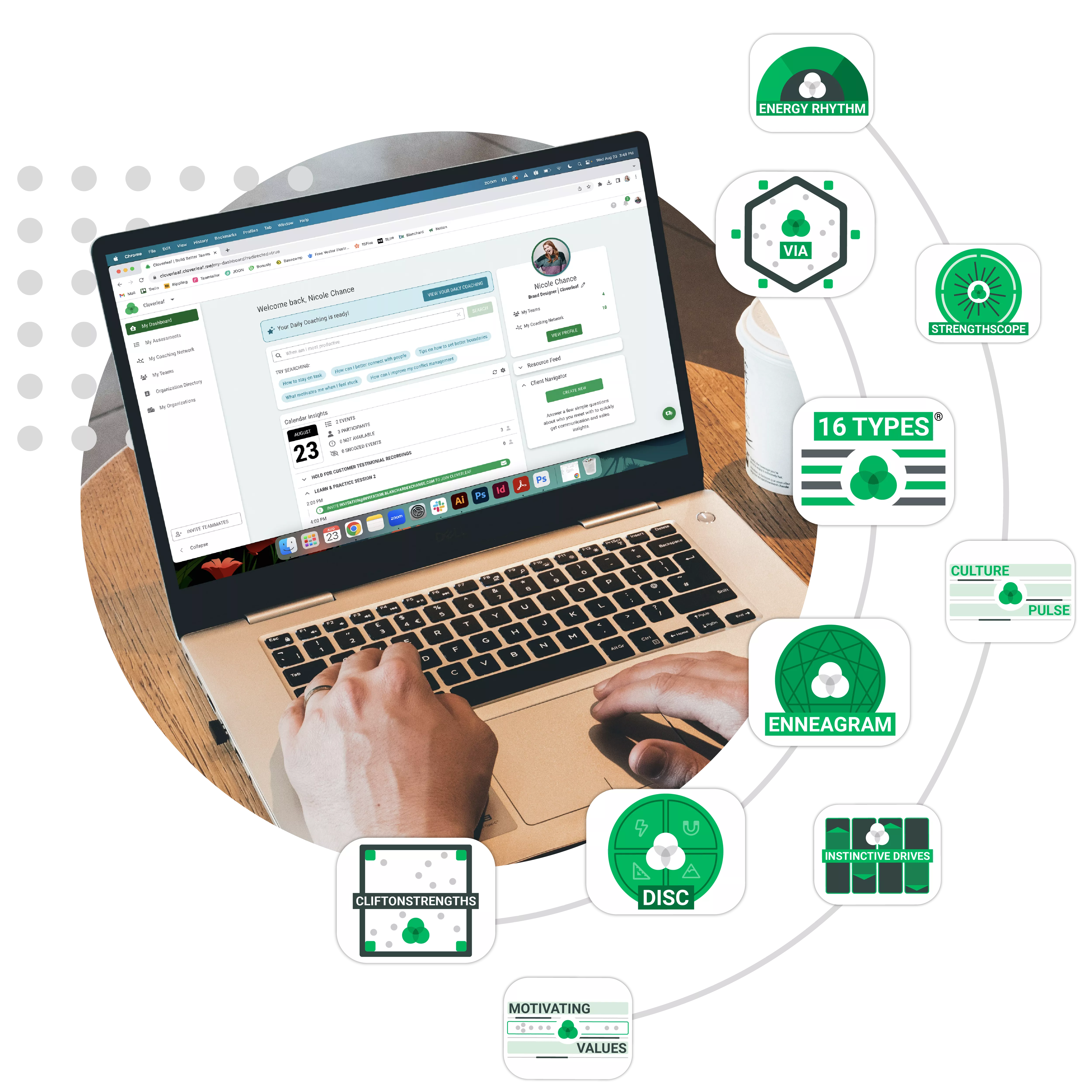
Cloverleaf: A Holistic Approach to Development:
Tools like Cloverleaf’s Automated Coaching™ take a unique approach by using assessment data to provide digital nudges that enhance performance. These nudges can be pivotal in refining both hard and soft skills.
Here’s how:
1. Effective Communication: Cloverleaf helps team member’s communication resonate the first time, every time.
2. Navigating Challenges: Resolving uncertain situations and difficult conversations can be painful without understanding what makes one another tick. Cloverleaf equips you with the necessary insight about yourself and others to overcome conflict quickly.
3. Personal Growth: By highlighting strengths and recognizing the skill sets of those on your team, collaboration becomes much easier. Cloverleaf gives you the know-how to seamlessly integrate hard and soft skills so that team members can complement each other’s expertise.
Cloverleaf is designed for organizations seeking to bolster employee growth through assessments and coaching. It provides critical insights that drive development, aiding individuals in understanding themselves and their colleagues.
Final Thoughts
The future of work is not a choice between hard skills and soft skills but rather a syncing between the two. By fostering an environment where skill development meets emotional acumen, companies will not only enhance productivity but also enrich the work experience for their teams.
References
- Claessens, B. J., Van Eerde, W., Rutte, C. G., & Roe, R. A. (2007). A review of the time management literature. Personnel Review.
- Gaskin, J. E., & Skousen, T. (2016). Time-chunking and hyper-refocusing in a digitally-enabled workplace: six forms of knowledge workers. Frontiers in Psychology, 7, 1627.
- Macan, T. H. (1994). Time management: Test of a process model. Journal of Applied Psychology, 79(3), 381.
In today’s dynamic work environment, marked by globally dispersed teams and remote collaboration, self-awareness has transformed from a psychological concept into a business imperative. It’s no longer just about personal well-being or mental health; it directly impacts productivity, job satisfaction, and the organization’s bottom line.
Leaders in organizations set the tone for modeling self-knowledge. Their ability to understand their emotions, biases, strengths, and weaknesses and how these aspects affect their interactions and decision-making processes is critical.
What Is Self-Awareness In The Workplace?
Self-awareness in the workplace is about tuning into your emotions, strengths, and behaviors and understanding their impact on others. It’s a practical skill that boosts communication, decision-making, and teamwork. Knowing your values and behavioral patterns can help contribute to a more effective, collaborative, and positive work environment. A high level of self-awareness allows leaders to be authentic, which, in turn, fosters trust within teams. A leader who is genuine, unafraid to admit mistakes, and humble enough to leverage the team’s collective strengths is likely to create an environment of openness and collaboration. This sense of authenticity inspires reciprocity. When a leader is authentic, team members feel more comfortable being authentic. What about individual contributors, though? The role of self-understanding doesn’t diminish when we shift our focus from individual contributors might argue it becomes even more crucial. Self-awareness in these roles equates to understanding one’s own strengths and weaknesses, recognizing triggers, and being aware of the effects one’s actions can have on the work environment.Key Takeaways:
- Self-awareness has evolved into a business imperative that influences productivity, job satisfaction, and the bottom line, transcending its psychological roots.
- Leaders play a pivotal role in fostering self-awareness, setting the tone for organizational culture and employee engagement by embodying self-knowledge and authenticity.
- Assessments and tools can help foster self-awareness in the workplace, enhancing understanding of individual strengths, weaknesses, and work styles.
- The cultivation of self-awareness at all levels of an organization can enhance individual performance, agile leadership, and, ultimately, the organization’s bottom line.

4 Challenges to Self-Awareness in the Workplace
Promoting self-awareness can be a complex process. One such challenge lies in the cultural fabric of the organization itself. An organization’s culture can either nourish personal growth or squash it.
A culture promoting learning and openness encourages employees to understand their personal strengths, recognize their weaknesses, and work on their professional development. Such a culture facilitates employees to be more conscious of their own actions and behavior to create stronger relationships within the team.
Leaders who want to promote self-understanding within an organization often face hurdles. These roadblocks can hinder the growth of individuals if the culture is adverse to change.
To navigate these challenges, it is essential to understand and acknowledge them first:
1. Organization Culture: An environment that encourages silos and secrecy will hinder self-reflection. It inhibits the open exchange of ideas and feedback, which is essential for personal growth.
2. Unconscious Biases: These biases can color our perception of ourselves and others, thus skewing our understanding and preventing us from gaining a clear self-view.
3. Ego: Egos can often act as a barrier. They can prevent us from acknowledging our own emotions or shortcomings and accepting our areas of improvement.
4. Fear of Feedback: The fear of negative feedback or criticism can keep us from seeking the valuable insights we need for growth.
The role of leadership is pivotal in the process of promoting self-awareness. According to Gallup®, managers account for up to 70% of the variance in employee engagement.
Without leaders understanding their behavior and its impact on culture and business outcomes, the organization can become chaotic. A leader’s awareness helps set the stage for organizational health and an engaging employee experience.

Do You Want To Grow Self Awareness In Your Workplace?
Find Out How To Quickly:
- Make development available to each team member
- Personalize growth to individual strengths and needs
- Integrate learning so it is actually in the flow of work
- Scale human skills that accelerate teamwork
- Prove the ROI of your development programs

How To Ignite Self-Awareness In Employees
Promoting self-awareness in a corporate setting can seem like a daunting task. It always helps when an individual has an intrinsic motivation to elevate their emotional intelligence in the workplace.
In the book The Leadership Challenge, authors Kouzes, and Posner studied leadership across industries and cultures and identified five practices of exemplary leadership. The first practice is to “Model the Way.”
Great leaders promote self-awareness by exhibiting it. Organizations offer learning and development opportunities, career pathing, and an internal standard of being an effective leader in this workplace.
Let’s break this down and explore specific strategies that both leaders and individual contributors can adopt to foster self-awareness:
3 Tips For Leaders:
- Seek Feedback Regularly: Leaders should actively solicit feedback from their teams. This can help them understand how their actions and decisions are perceived, providing valuable insights for self-improvement.
- Practice Mindfulness: Being mindful and present in every interaction allows leaders to observe their behavior and its impact on others more effectively.
- Self-evaluation: Regular self-assessment can help identify areas of strength and improvement, contributing to a deeper understanding of oneself.
3 Tips For Individual Contributors:
- Seek Mentorship: A mentor can provide an external perspective, helping individuals better understand their strengths and weaknesses.
- Practice Active Listening: By understanding others’ perspectives, individuals can cultivate empathy and increase their awareness of others’ experiences and needs.
- Cultivate Empathy: Developing empathy can enhance understanding of others, promoting better teamwork and collaboration.
Everyone within the organization should be given opportunities to develop self-awareness skills. Leaders can facilitate this growth by empowering and supporting each team member. After all, a self-aware team can contribute significantly to a positive working environment, enhance collaboration, and ultimately drive organizational success.
How Can Self Awareness Be Applied In The Workplace?
Applying self-awareness in the workplace involves regularly reflecting on personal emotions, strengths, and behaviors and understanding their impact on team dynamics and decision-making. It’s about actively seeking feedback, being open to learning, and adjusting behaviors for better collaboration and communication.
Leaders can encourage self-awareness by creating an environment of trust and openness where employees feel safe to express themselves and learn from their experiences. This approach leads to a more empathetic, cohesive, and effective workplace, where everyone knows their contributions and impact on the team and organizational goals.
10 Ways To Apply Self-Awareness At Work
1. Tailor Communication: Use your self-awareness to adapt how you communicate. If you know you’re a direct communicator, you might soften your approach when dealing with more sensitive topics or colleagues who prefer a gentler communication style.
2. Manage Reactions: Knowing your triggers, you can better control your reactions. For instance, if tight deadlines stress you out, you can plan or communicate your concerns early.
3. Play to Your Strengths: Recognize what you’re good at and volunteer for tasks that align with your strengths. This not only boosts your confidence but also increases your efficiency and effectiveness.
4. Acknowledge Weaknesses in Team Settings: Openly acknowledge areas you’re working on in team discussions. This honesty fosters trust and encourages others to share, creating a supportive team environment.
5. Adjust to Others’ Work Styles: Understanding your preferences can help you better adapt to others’ styles. For example, you might compromise with a quick call if you prefer email, but a colleague likes face-to-face meetings.
6. Enhance Decision-Making: Use self-awareness to recognize biases in your decision-making process. This can help you make more balanced and fair decisions.
7. Set Realistic Goals: Knowing your capabilities helps set achievable goals. This avoids overcommitment and under-delivery, leading to more consistent performance.
8. Improve Conflict Resolution: Understanding your conflict style – whether you tend to avoid, want a competitive edge, or find ways to mediate – can help you navigate disagreements more effectively.
9. Seek Roles That Suit You: Use your self-awareness to guide your career path. Choose roles that align with your values, interests, and skills.
10. Foster a Positive Work Environment: By being aware of your mood and its impact on others, you can contribute to a positive, energizing work culture.
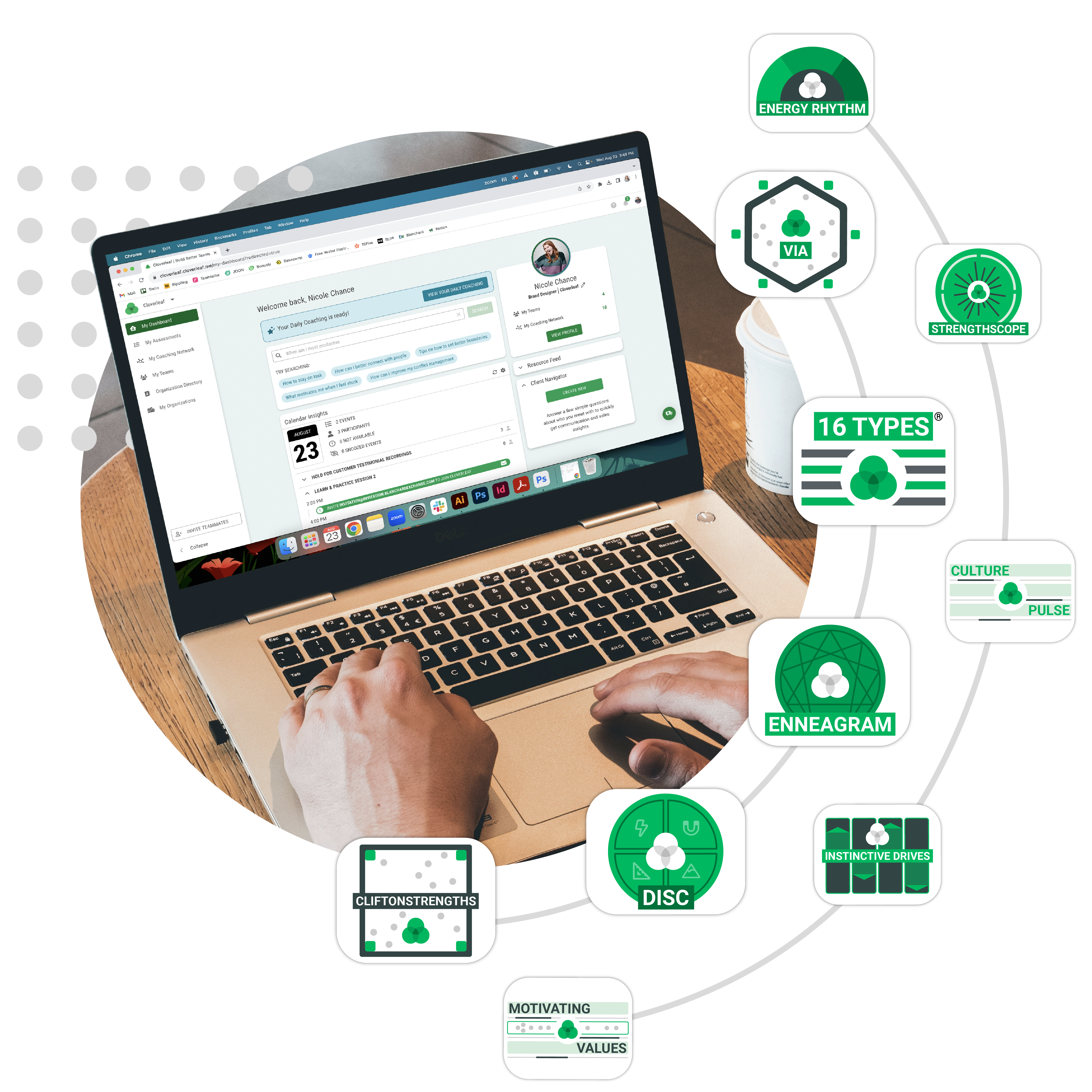
Leveraging Assessments And Tools For Greater Self-Awareness In The Workplace
Assessments and personal development tools play an indispensable role in fostering self-awareness in the workplace. These resources help individuals identify their strengths and weaknesses and provide insights into diverse work and communication styles.
Top Personality Tests For Employees
Utilizing personality assessments can help employees better understand their working styles, strengths, and areas for improvement to foster collaboration within the team. Here are the top five assessments that can significantly enhance performance in the workplace:
16 Types (MBTI): This tool helps identify personality types based on four dichotomies: Extraversion-Introversion, Sensing-Intuition, Thinking-Feeling, and Judging-Perceiving. Understanding these aspects can help individuals recognize their preferences in perceiving the world and making decisions.
DISC: DISC measures an individual’s Dominance, Influence, Steadiness, and Conscientiousness, helping teams understand their dynamic better and enabling more effective communication, feedback, and collaboration.
Enneagram: The Enneagram personality test identifies individuals’ basic fears and desires, helping them understand their motivations and behaviors better.
CliftonStrengths®: This assessment helps individuals identify their top talents, allowing them to leverage these strengths for better performance and satisfaction at work.
VIA: Character Strengths: The VIA survey helps individuals identify their dominant character strengths.
Cloverleaf: A One-Stop-Shop For Scaling Self & Other Awareness In An Organization
Cloverleaf is an all-in-one tool that uses the most popular and validated assessments to help teams understand each other better, identify individual strengths, and experience personal growth.
Cloverleaf’s user-friendly dashboard offers insights into side-by-side assessment comparisons, strengths and blindspots, and team dynamics all in one place.
Teams using Cloverleaf have reported significant improvements: a 41% increase in strength awareness, a 24% increase in psychological safety, and a 33% increase in feeling recognized.
Empower your people to understand each other, give feedback, be heard, lead effectively, and love working together. Start a free team trial today!
4 Ways Self-Awareness Can Lead To Greater Organizational Effectiveness
The benefits of self-awareness extend far beyond knowing one’s strengths and weaknesses. It’s a vital ingredient that fuels numerous aspects of professional success.
1. Improved Decision-Making: Self-aware individuals have a clearer understanding of their values, principles, and goals, leading to better decisions. They’re less likely to be swayed by external factors and can make choices aligned with their core beliefs.
2. Enhanced Leadership Skills: Self-aware leaders can identify their strengths and shortcomings and adapt their leadership styles accordingly. They are more likely to lead by example, foster open communication, and create an inclusive environment, all of which contribute to a positive organizational culture.
3. Increased Job Satisfaction: Self-awareness enables individuals to understand what motivates them and their skill sets. Leaders can help tailor their career paths to their aspirations and abilities.
4. Better Mental Health: Self-awareness aids in recognizing and managing emotions, reducing stress, and maintaining mental well-being. It’s a powerful tool for resilience, enabling individuals to better cope with challenges and setbacks.

The Impact of Self-Awareness on Organizational Success
Research points to a clear correlation between self-awareness and performance. Notably, Bass & Yammarino and Atwater & Yammarino’s studies highlight how individuals with a more accurate perception of their abilities typically perform better.
The utility of self-understanding extends to leadership as well. A study conducted with the Royal Navy found that leaders with a higher self-awareness could adapt their leadership style to situational demands more effectively, demonstrating the essence of agile leadership.
The implications of these findings are clear. When organizations foster self-awareness at every level, they witness individual performance and leadership agility improvements, ultimately enhancing their bottom line. This highlights the transformative potential of self-awareness when it becomes an integral part of daily practices, shaping individuals and organizations toward success.
These examples demonstrate the transformative power of self-aware people in diverse professional contexts. They show that self-awareness is a personal attribute and a vital skill that fuels collective growth and success.
Source: themyersbriggs.com
Adopting self-awareness is not a one-time task but a journey that needs to be integrated into daily routines. Implementing tools that provide automated, personalized coaching can be a valuable aid. By offering daily insights about oneself and one’s teammates, these tools help in nurturing self-awareness as a habit.
Self-Awareness: The Catalyst for Organizational Transformation
When individuals strengthen self-awareness, the collective team is elevated, directly impacting business results.
Connect with us today to explore the power of self-awareness and unlock your team’s full potential. Stay updated with the latest insights for creating a healthy workspace by following us on LinkedIn and other social media platforms.
Self-awareness is not a buzzword; it’s a transformative tool that shapes individuals, teams, and organizational culture. Here’s to making it an integral part of our professional lives.
A chronotype quiz helps you understand the biological clock that controls your body’s rhythms. Your Chronotype may be why you feel grumpy in the morning or at your best at 5 am. It may be why you feel exhausted in the evening or focused by 8 pm. This genetic, biological clock affects more than your sleep pattern. It affects when your optimal times to work, perform, eat, plan, exercise, and more.
Are you a Starter, Pacer, or Anchor? Take this quiz to find out. Discover your Chronotype today by taking the Energy Rhythm Assessment.
What Does Chronotype Mean?
Unlike a standard clock, not every person’s biological clock keeps the same time or pace. Of course, there’s a reason why people say they’re not a ‘morning person.’
Some individuals are more productive in the morning than others, while some function better in the evening. Everyone has an individual sleep schedule that affects their day-to-day performance.
Your body is programmed to wake, sleep, and function much better at certain times of the day than others. People fall into different ‘Chronotypes’ based on general awake and sleep preferences or needs. Your Chronotype reveals what rhythms are optimal for you to work positively with your body, not against it.
A chronotype quiz can help you understand your biological programming better and discover which Chronotype you relate to the most.
What Are The Three Chronotypes?
There are three primary Chronotypes – Starter, Pacer, and Anchor. These Chronotypes correspond with your unique biological clock.
In the workplace, Chronotype matters because it affects the times of day an individual will feel most alert, focus on tasks the best, and what jobs they do best during certain times of the day.
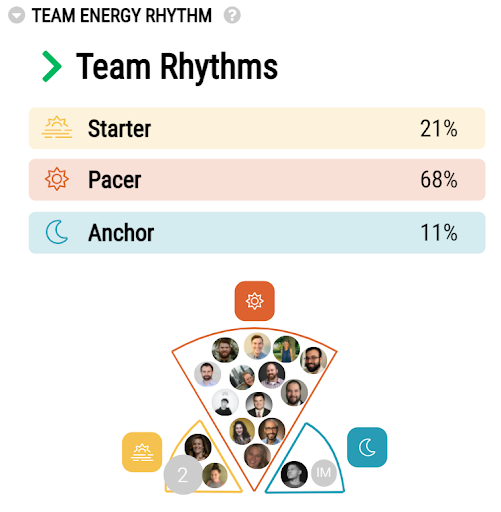
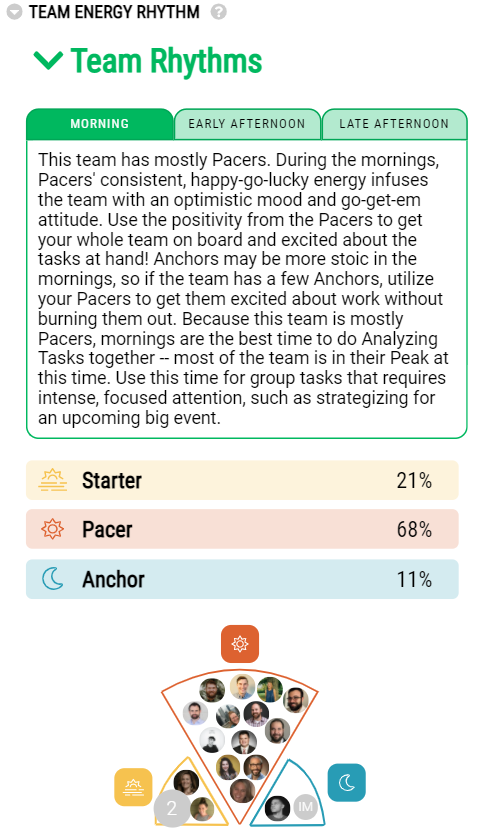
Having varied chronotypes on a team can benefit the team’s productivity and creativity if every team member knows their differences. Teams can get knowledge of their differences, use it to their advantage, and understand how they will feel through healthy collaboration.
The Cloverleaf Chronotype quiz can reveal a lot about a person concerning their energy patterns over a typical 9-5 workday, what tasks are most manageable for them to excel at during specific times of the day, and what their team’s flow may look like daily.
Using the Cloverleaf Chronotype Quiz, you can discover your Chronotype in just 90 seconds. The quiz includes questions to better understand your biological programming to reveal your Chronotype.
Cloverleaf’s Energy Rhythm Assessment draws from research about circadian rhythm and circadian typology. Circadian rhythm refers to the internal processes which regulate the sleep/wake cycle and affect people’s biological and psychological functioning in everyday life, health, and disease (Adan et al., 2012).
Your chronotype is one of three types:
- Morning type (the Starter)
- Midday type (the Pacer)
- Evening type (the Anchor)
The Starter Chronotype is about 15-25 percent of the population.
Starters are morning-type people. The Starter is an individual who enjoys an early sleep schedule and early wake time. Their peak happens in the early morning, and they experience their trough in the middle of the afternoon. This is around 12-1 pm time (lunch hours). Their recovery tends to occur in the late afternoon to early evening, around the end of their 9-5 workday.
The Pacer Chronotype is about 50 percent of the population.
Pacers are most productive during mid-morning. Pacers have a similar energy rhythm to Starters, but their peak happens in the mid-morning portion of the day. Pacers get up early and have their trough mid-afternoon, with a recovery period from late afternoon to early evening towards the end of their 9-5 workday.
The Anchor Chronotype is about 15-25 percent of the population.
Anchors are commonly known as the ‘Night Owl.’ The Anchor will often sleep in and be ready to sleep late in the evening. Their energy rhythm is similar to those that are considered Starters. Anchors experience their peak in the late afternoon to early evening at the end of a typical 9-5 day.
Anchors may have more variability during their trough than Starters or Pacers, but that trough may also be longer. Their trough happens early to mid-afternoon, with a recovery period in the morning (beginning of a typical 9-5 workday). The Anchor will often go to bed late into the night.
Pacers are the most common type among adults. And it’s important to remember that all Starters, Pacers, and Anchors experience a peak, trough, and recovery period in their day.
Understanding Your Chronotype Quiz Results
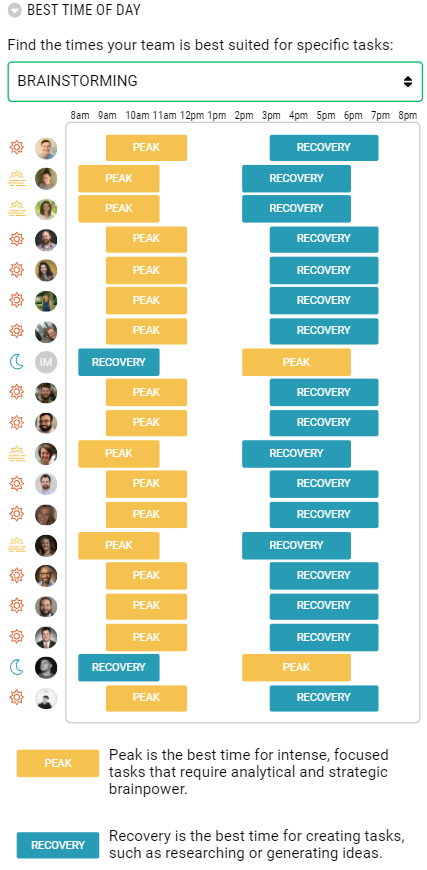
Knowing your Energy Rhythm can help you determine the amount of sleep and energy you need to excel. Learning more about your team member’s assessment results can help improve collaborative efforts.
Peak time is best for analyzing tasks, requiring lots of analytical and strategic brainpower.
A Trough is best for maintenance tasks – those low-brainpower, straightforward tasks like adding to your calendar or answering emails.
Recovery is best for Creating Tasks.
People experience a rise in energy, mood, and vigilance during their peak. People typically experience a dip in energy, mood, sleep performance, and care during their trough. During recovery, energy and mood take a sharp rise. The peak, trough, and recovery periods occur at different times for people, depending on their Chronotype.
Discover your Chronotype today with Cloverleaf. Take the Chronotype quiz to find out which Chronotype you are to start maximizing your effort and better utilizing your energy.

HUMAN SKILL PROGRAMS ARE HITTING LIMITATIONS...
5 THINGS THIS FREE RESOURCE WILL TEACH YOU
- Close the widening gap between learning and on-the-job application
- Overcome the tension of pausing productivity for development opportunities
- Integrate learning so it is actually in the flow of work
- The evolution of human skill development
- What Automated Coaching™ is and how it works.
There’s a lot of conversation happening in the business community around burnout and the impact on the well-being of employees. So, what is burnout and how can we recognize it in ourselves and in our team members? The World Health Organization defines burnout as “a syndrome conceptualized as resulting from chronic workplace stress that has not been successfully managed.” It can also be described as a prolonged response to chronic emotional and interpersonal stressors on the job. Burnout can be broken down into three dimensions: exhaustion, cynicism, and inefficacy.

Exhaustion: Most of the time when we talk about job burnout, we are actually thinking about emotional exhaustion. This is that sense of fatigue, lack of energy, and “I don’t want to do this I really just want to take a nap”.
Cynicism: Cynicism adds to emotional exhaustion. It is recognizing that you are mad at the source of emotional exhaustion. It’s a sense of depersonalization where you become cynical about the source of that extreme work-related stress where you think “ I do not want to even be a part of this anymore.”
Inefficacy: The third dimension is a sense of inefficacy. You just don’t feel capable, you do not feel confident to do this. So, it is not just the feeling of fatigue- it is actually where you start to engage in cognitive processes that are fighting against the source of that emotional exhaustion.
The key question that a lot of people ask is feeling burnout normal? Should I just suck it up and fight through it? And the answer is absolutely not. It is important to pay attention to your mental health and think about why you are feeling burned out. I like to explain the importance of this with a story.
Peter McLeod was an acrobatic pilot for Red Bull for years. When I was growing up I used to go fishing in northern Ontario, Canada every year. Peter is the son of the outfitter where we stayed ever since I was little. When Peter was seventeen he was doing a practice run. His dad, the owner of the outfitter shop, invited us to watch Peter’s trial run. It was insane to watch, he was doing upside-down flyovers and it was absolutely unreal. After the experience, Peter landed and came back to talk with his dad. They went over every single detail of how the plane operated, from whether the noises sounded differently, to the seat adjustment, to reaching the top speed 0.1 seconds faster. It was incredible to hear the conversation. We jokingly asked, “What’s next? Can you come back and do this tomorrow”. Peter’s response was very clinical, “After doing that type of work with this machine, it’s going to take at least a week’s worth of maintenance.”
The point is that the real work is not all the acrobatic flying, the real work is taking care of the machine. Your mind and body are a machine. Like this airplane, it has to handle a lot of stress and crazy events. If you don’t take care of the machine, it’s going to fall apart and you’re going to have a dangerous crash.
Think about what we put ourselves through on a daily basis and then reflect and ask yourself, “How am I doing right now?” which is the equivalent of being able to think, “This feels off…I feel a little bit more tired than usual… I didn’t feel like my best self in this specific circumstance.”
All of those are signals that are trying to tell you that something is a little bit off. And these are to some degree signals of burnout. Do you need to be paying attention to your work-life balance? How much is self-care a part of your normal weekly and daily rhythms? Are you currently under a heavy workload or in a new job or work environment?
After recognizing some of the symptoms of burnout, we will cover the causes and impact of burnout in the next article.
Click here for Part Two: The Causes And Impact Of Burnout
Are you interested in trying Cloverleaf with your work team? Invite your entire team and try Cloverleaf free for 14 days.

HUMAN SKILL PROGRAMS ARE HITTING LIMITATIONS...
5 THINGS THIS FREE RESOURCE WILL TEACH YOU
- Close the widening gap between learning and on-the-job application
- Overcome the tension of pausing productivity for development opportunities
- Integrate learning so it is actually in the flow of work
- The evolution of human skill development
- What Automated Coaching™ is and how it works.

